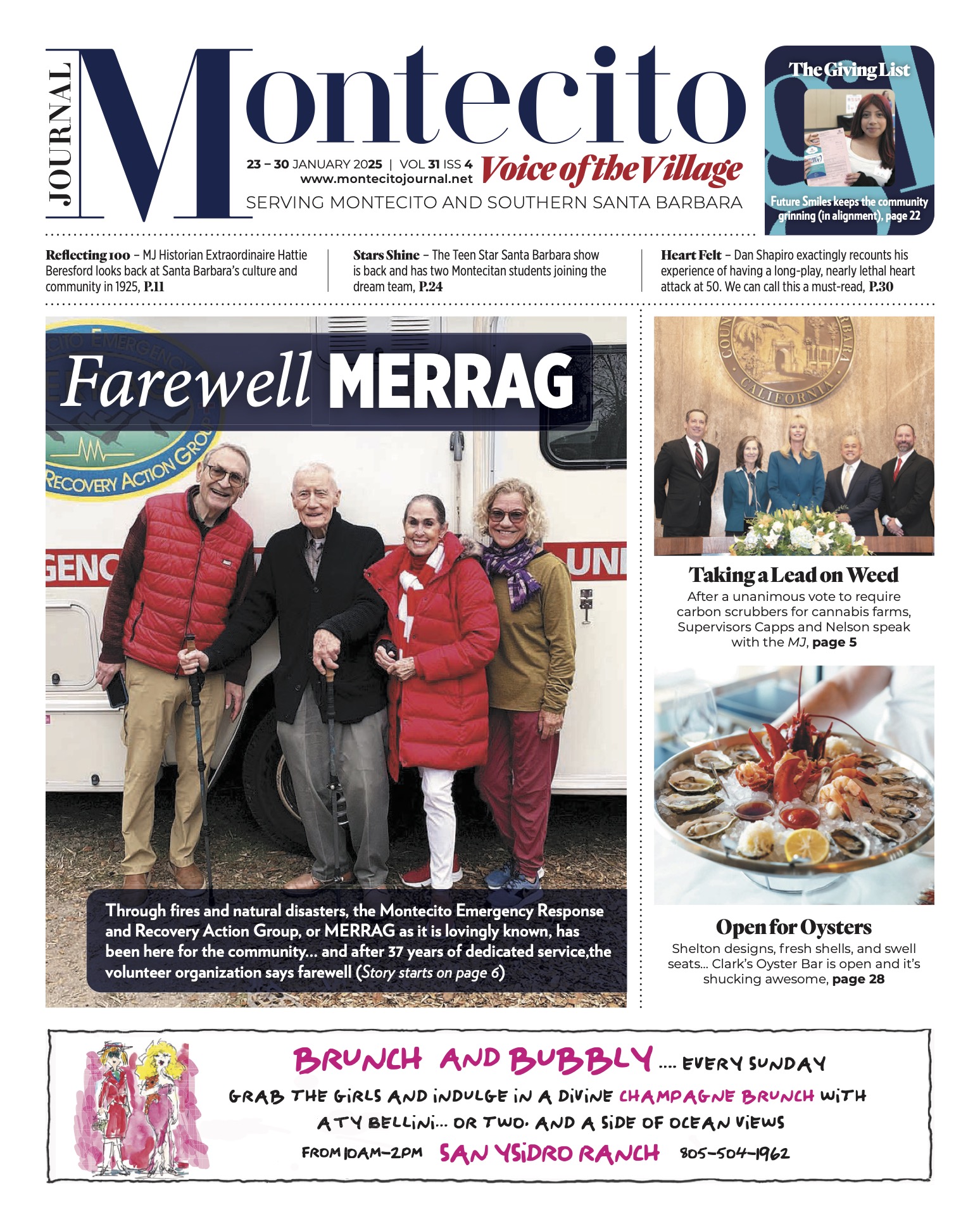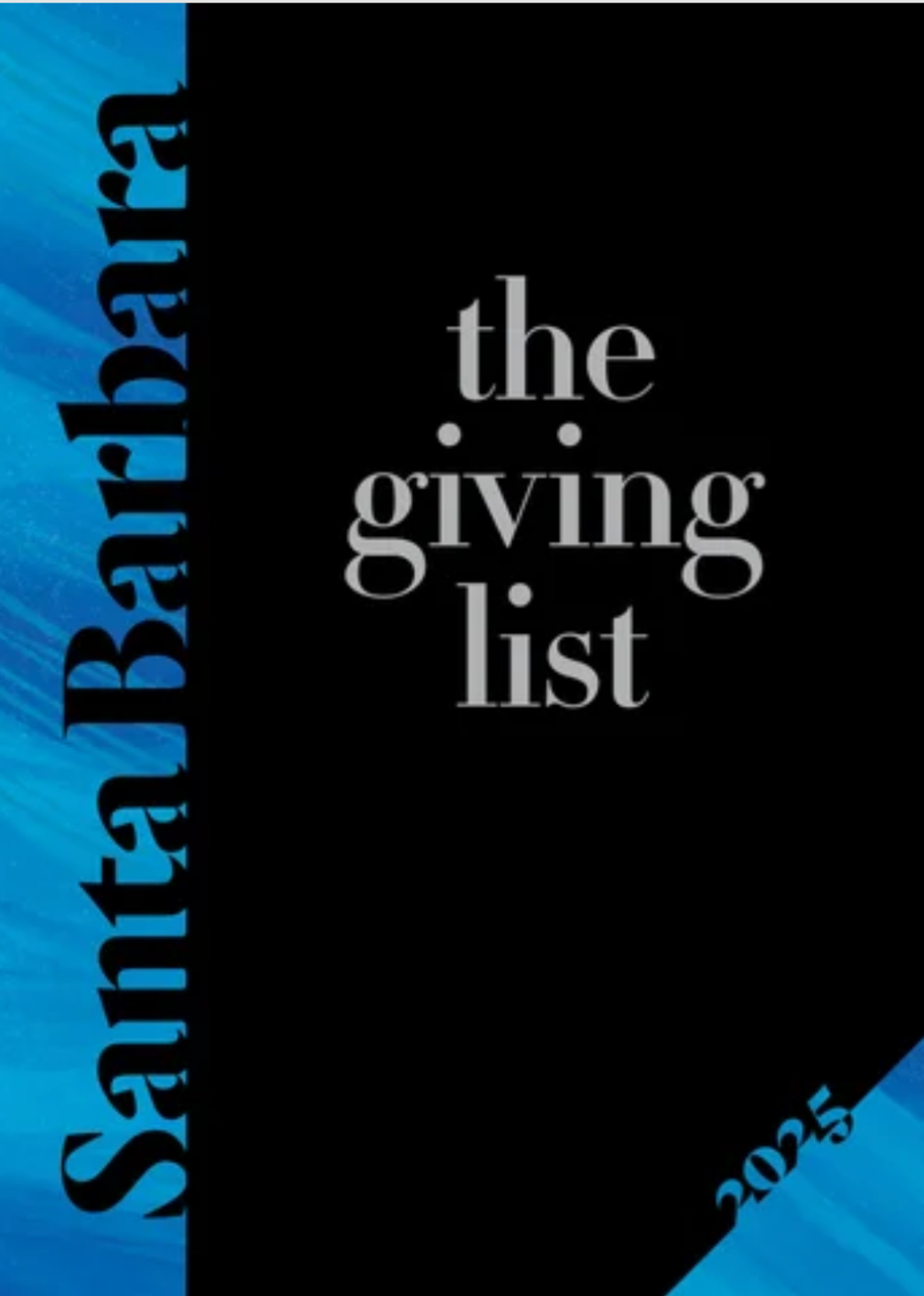In 1886, the Santa Barbara waterfront was connected to three, often odiferous, esteros and littered with dilapidated shacks and the detritus of the hide and tallow industry. Despite the fact that there were several crude wooden bathhouses, the area was generally a “wild waste of sand, tin cans, and dead animals,” according to historian C.W. […]
In the early 1920s, the artist John Dwight Bridge was a popular and important force in the cultural renaissance fostered by the Community Arts Association. Having proven himself in earlier productions of the Community Arts Players, he may have reached his apex when he took on the role of Nicola, the Bulgarian manservant in George […]
Recently Trending
More from Montecito
The moon was nearly full that blustery March night in 1933, when a lone figure paused on the platform of Salina, Kansas, the closest train depot to the geographic center of the nation. Withdrawing the last of his money from a pocket of his corduroy trousers, he carefully placed the quarter and nickel on the […]
Her friends remembered her as eccentric, fun-loving, and generous and called her Peggy. In the late Elane Griscom’s 1990 Montecito Magazine article about Marguerite Ravenscroft, Kit McMahon, then archivist of the Montecito Association History Committee, remembered that Peggy once gave a $50,000 loan to a friend from cash tucked away in various spots in her […]
When Edward Johnson, principal stockholder of the Portola Theater Company, purchased the California Theatre on W. Canon Perdido Street in 1920, he envisioned a bright entertainment future for the town. At that time, there were only four movie houses, and one, the Strand Theatre, was being replaced by a motorcycle shop. By 1922, Johnson had […]
In March 1914, Santa Barbarans were filled with anticipation because the famous leader of Tuskegee Institute, Booker T. Washington, was coming to town to speak at the State Normal School of Manual Arts and Home Economics. Articles in the Morning Press told the story of his rise from the privations of slavery to becoming one […]
Though the beautiful and elegant Fiesta del Museo is cancelled this year, Project Fiesta: A History of Old Spanish Days is not. And what better place to see the latest exhibition than outdoors in the spacious and beautiful courtyard of the Santa Barbara Historical Museum, where fresh air and social distancing create an idyllic environment? […]
St. Paul’s has been nominated for inclusion on the list of Santa Barbara City historic landmarks and is working toward state and national recognition as well. Organized by architect Robert Ooley, F.A.I.A., a group of volunteers has been gathering historic information about the church to support the nominations; I was lucky enough to be among […]
Note to Readers: In 2007, when I wrote about the 1918 Spanish Flu Epidemic in Santa Barbara, I never thought its story would ever be timely and relevant to today. I am sorry to have been wrong. I offer it again for your curiosity, instruction, and hope. They got through it then, and we’ll get […]
Read more...
Old Relics Vanishing. One by one the old adobe houses, the ancient landmarks of Santa Barbara, are gradually vanishing and modern buildings are taking their places. There are certain memories that cling to these old places, some of which date back one hundred years, which to some must seem like the severance of old friends […]
Thomas C. Parker, president and director of Hutton Parker Foundation, really knows how to celebrate history, and he is willing to share. The Foundation has recently completed a multimillion-dollar restoration of the historic Hill-Carrillo Adobe and is offering the beautifully appointed building to non-profit groups for meeting space – for free! In addition, one wing […]
“It is a perhaps a little humiliating to us that we should have to wait till a stranger should come across the continent to reveal to us the beauties that lie at our door,” said the Reverend J.W. Hough at the library soiree in the Odd Fellows Building on State Street in September 1875. He […]
In 1874, author Charles Nordhoff, at the behest of the Southern Pacific Railroad, published a second edition of his California for Health, Pleasure and Residence. In it, he languished praise on Santa Barbara as the loveliest spot in California and promoted its health benefits. Soon the small influx of Easterners escaping the harsh winter months […]
Loureyro Roadis named for the family of Spanish-born José Maria Loureyro, a Basque who came to California in the 1850s. He served as president of the Santa Barbara City Board of Trustees in the 1860s and early ‘70s. In 1865 he approved an ordinance regarding the development of the streets in Santa Barbara, and in […]






